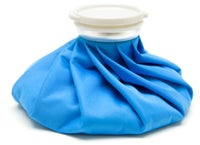Hamstring Strain

A hamstring strain most often occurs from muscle overload — suddenly placing too much weight on the muscle or stretching it beyond its capability. Muscle tightness, imbalance, weakness, and fatigue can all put you at risk for a hamstring strain. Runners, dancers, and athletes are all at greater risk, but more strains occur in adolescents because their bones and muscles grow at different rates.
Symptoms of Hamstring Strain
If the strain occurs during running, you’ll feel a sudden, sharp pain in the back of your thigh that forces you to stop moving. Swelling, bruising or discoloration on the back of the leg, and hamstring weakness can also occur.
Diagnosis and Testing
To diagnose the strain, our orthopaedists will examine your leg for bruising and will press on your thigh to identify any weakness, pain, or swelling. Imaging tests, including X-rays and MRIs, can help your doctor determine the severity of your injury and if your muscle has pulled away from the bone.
Treatment Options
RICE Protocol
- Rest
- Ice
- Compression
- Elevation
The course of treatment depends on your type of injury and its severity. Most hamstring strains can heal well on their own if you follow the RICE protocol frequently used to treat sports-related injuries. RICE refers to rest, ice (several 20-minute applications), compression, and elevation.
Knee Splint
Your orthopaedist could also recommend a knee splint to keep your leg immobilized and in a neutral position to encourage healing. Specific physical therapy exercises that focus on flexibility can also help restore strength and motion.
Surgery
In more severe cases — where the muscle has detached from the bone, surgery is often required. To repair the injury, the surgeon must pull the hamstring muscle back into place and remove any scar tissue. If there is a complete tear, the surgeon sews the muscle back together with stitches. Crutches, a brace, and physical therapy will help with recovery that can last up to six months.
Prevention is the Best Medicine
WakeMed and the North Carolina Football Club (NCFC) have partnered to provide young athletes and their families with information on nutrition and injury prevention, including proper stretching before activities. A little stretching can go a long way to preventing a hamstring injury.
Additionally, Wake Orthopaedics offers a highly effective soccer injury prevention program.